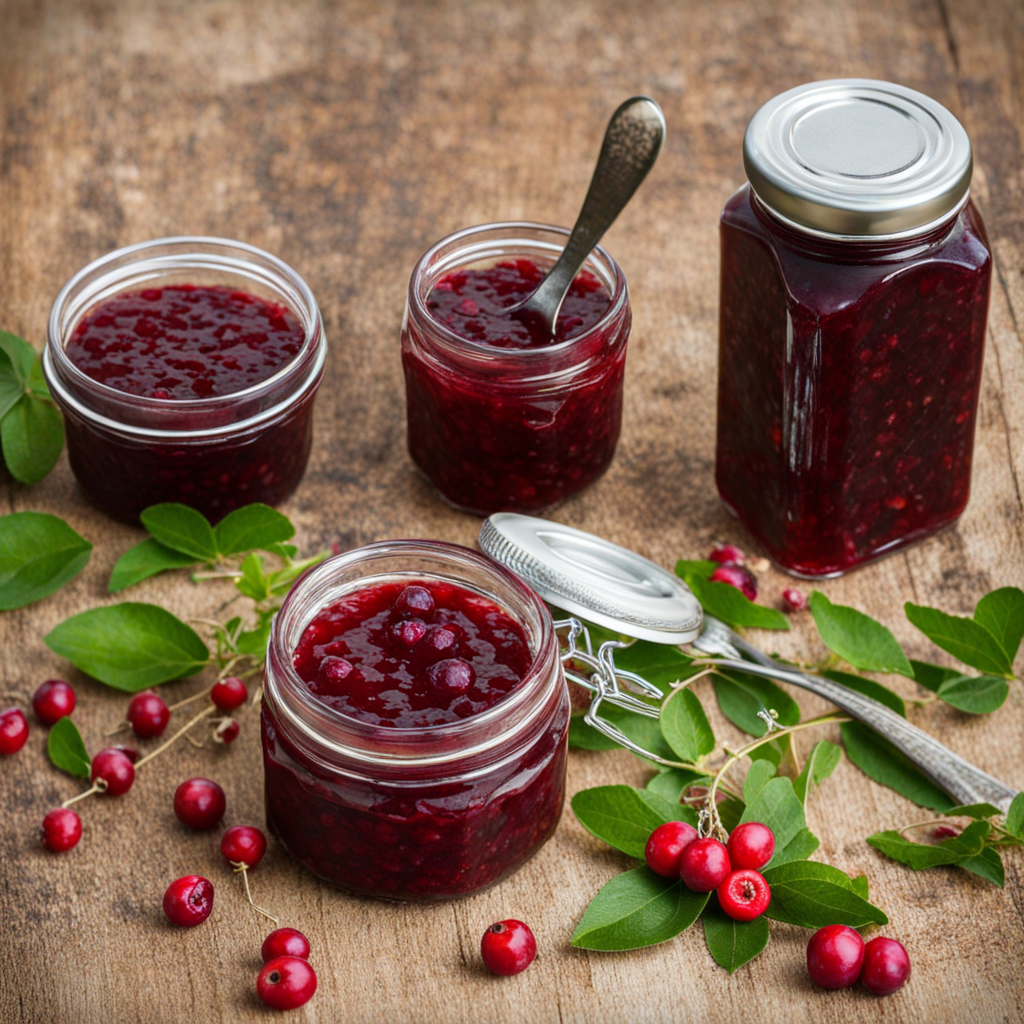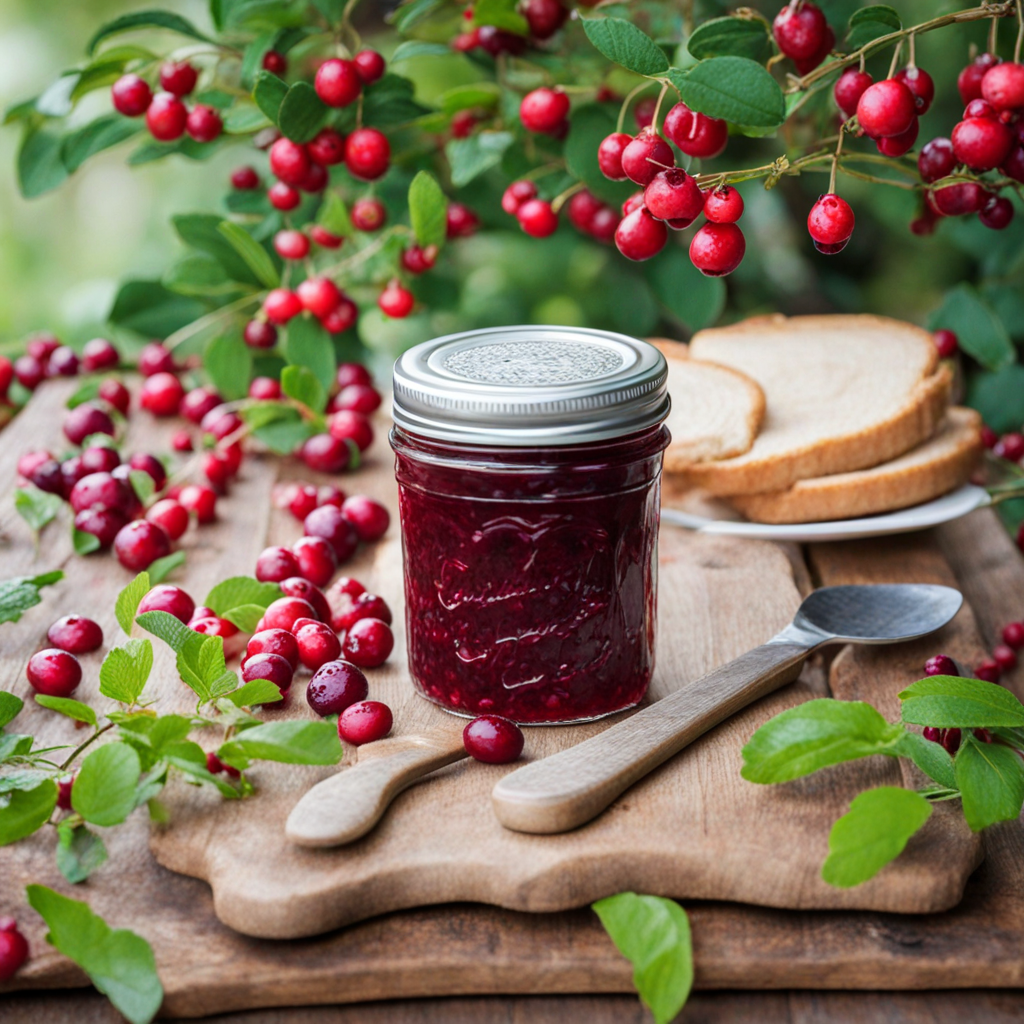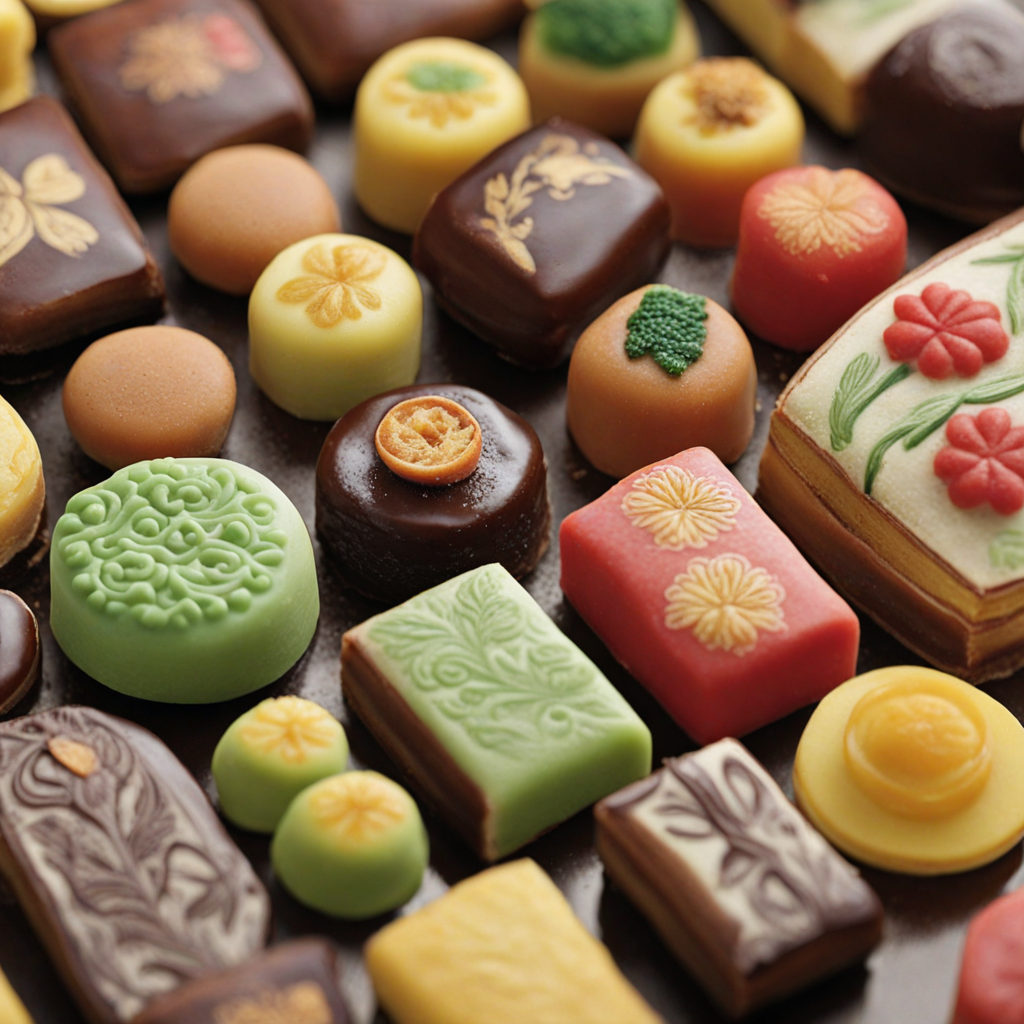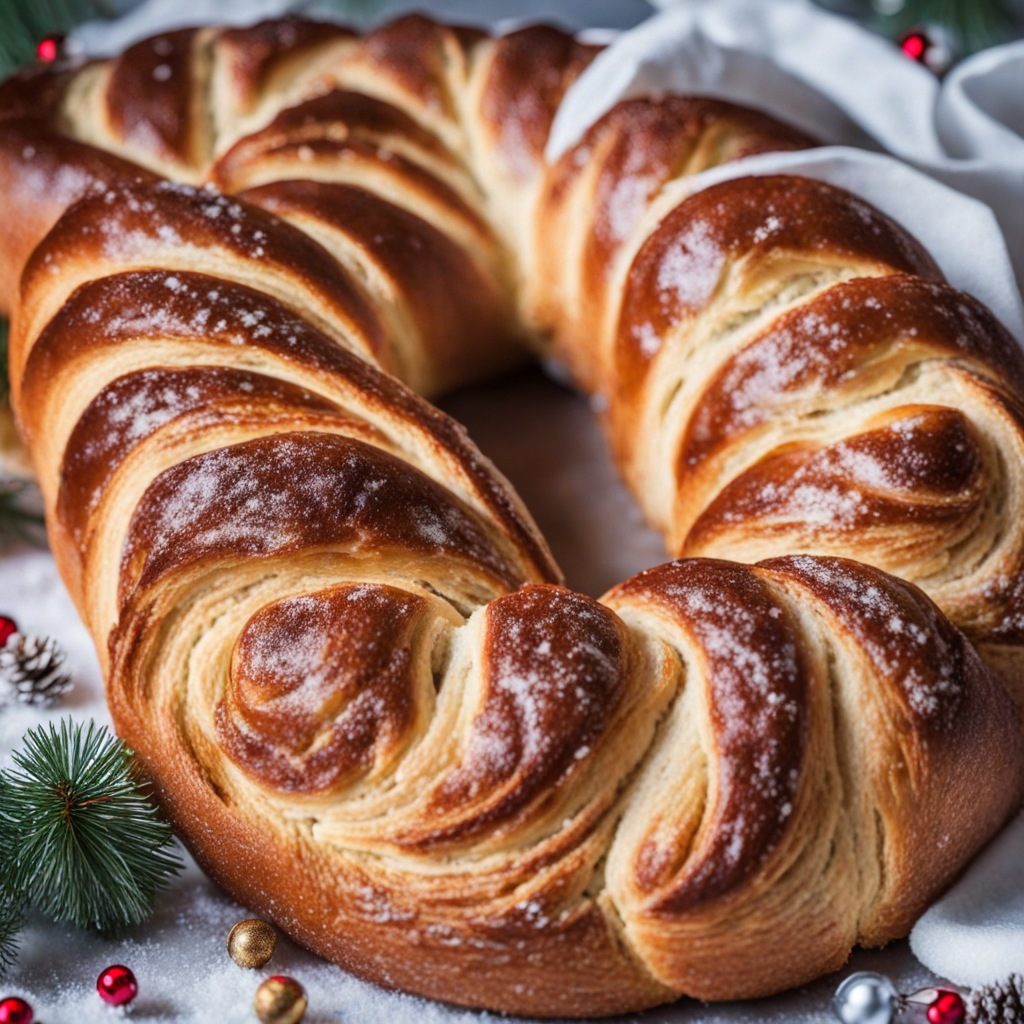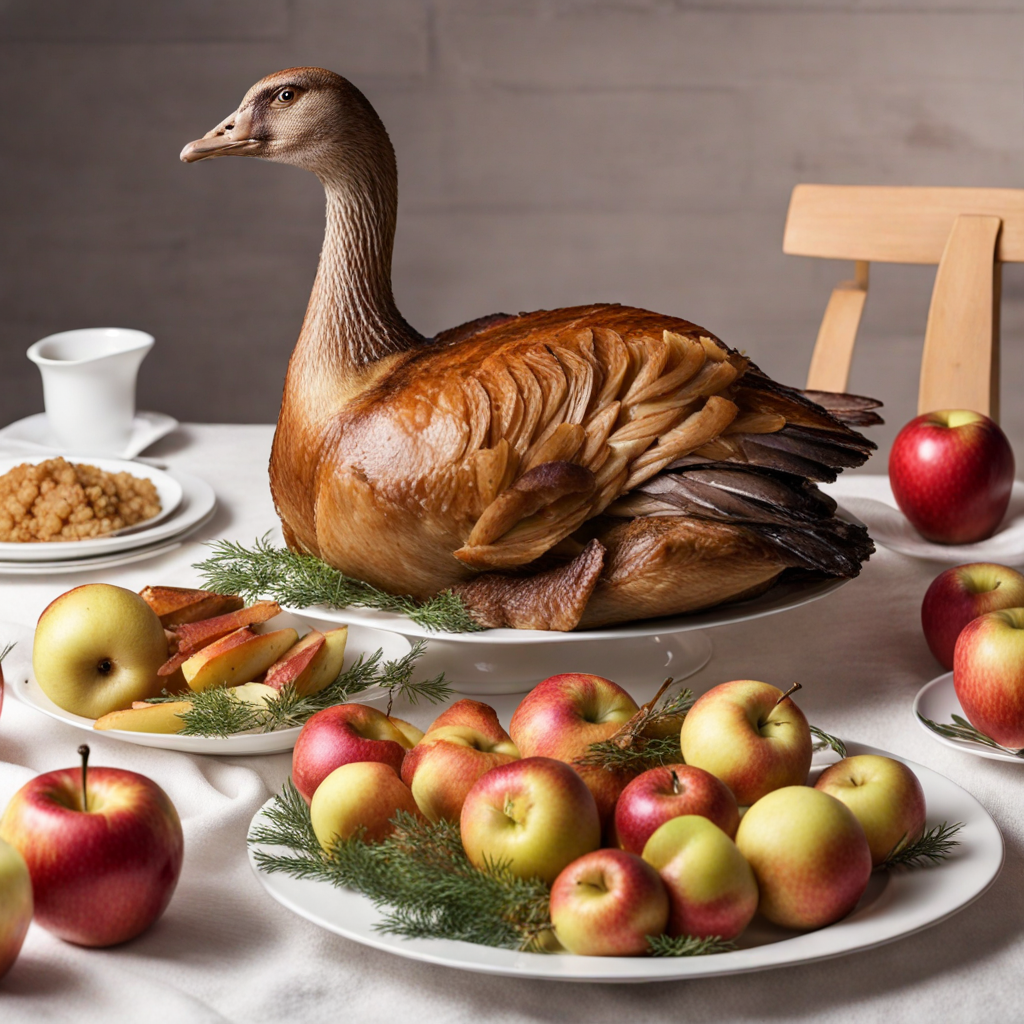Lingonberry Jam
Lingonberry Jam is a delightful condiment that originates from Estonia, where the tart and sweet flavors of the lingonberry fruit are celebrated in both traditional and modern cuisine. The jam is typically made by cooking down fresh lingonberries with sugar, resulting in a thick, ruby-red spread that captures the essence of the forest. Its vibrant color and glossy texture make it not only appetizing but also visually appealing, making it a perfect accompaniment to various dishes. The taste of lingonberry jam is a harmonious balance of tartness and sweetness, with a distinct berry flavor that is both refreshing and invigorating. Unlike many other berry jams that lean heavily on sweetness, lingonberry jam offers a pleasantly tangy profile, making it an excellent contrast to richer, savory foods. It pairs beautifully with meats, such as roasted game or pork, and is often served alongside traditional Estonian dishes like blood sausages or potato pancakes, enhancing the overall flavor experience. Additionally, lingonberry jam is versatile enough to be used in a variety of culinary applications. It can be spread on toast or pancakes for breakfast, dolloped onto yogurt or ice cream for a sweet treat, or even incorporated into salad dressings for a zesty twist. The unique taste of lingonberry jam captures the spirit of the Estonian landscape, providing a taste of the wild forests where these berries thrive, making it a must-try for anyone seeking to explore new flavors and culinary traditions.
How It Became This Dish
Pohlamarmelaad: The Sweet Legacy of Estonia Pohlamarmelaad, or bilberry jam, is an emblematic culinary treasure of Estonia, a small Baltic nation known for its rich natural landscapes and deep-rooted traditions. This luscious spread, made from the small, dark-blue bilberries (Vaccinium myrtillus), is not just a staple in Estonian households but a symbol of the nation's connection to its land and its seasonal rhythms. #### Origins and Historical Context The origins of pohlamarmelaad can be traced back to the ancient practices of foraging, which have been an integral part of Estonian culture for centuries. Bilberries thrive in the wild forests of Estonia, where they grow abundantly across the diverse terrains, from the rugged hills of the north to the lush valleys in the south. For centuries, Estonians have harvested these berries during the late summer and early autumn months, a practice steeped in tradition and sustainability. Historically, the use of wild berries in preservation reflects a broader European practice of making fruit preserves. In the medieval period, when sugar was a luxury, jams and jellies were often made with honey or other natural sweeteners, highlighting the resourcefulness of communities. By the 19th century, with the introduction of refined sugar and advancements in canning techniques, the production of jams like pohlamarmelaad became more widespread. This shift enabled the preservation of the summer bounty for the long, harsh winters typical in Estonia. #### Cultural Significance Pohlamarmelaad holds a special place in the hearts of Estonians, embodying the essence of their culinary heritage. It is not merely a breakfast spread; it is a conduit of memories, evoking childhood afternoons spent foraging in the woods, family gatherings, and traditional feasts. In Estonia, bilberries are often celebrated as a symbol of the wild and natural beauty of the country, and pohlamarmelaad serves to encapsulate that spirit. The Estonian language itself reflects the deep-rooted association with bilberries. The word "pohla" is derived from the ancient Finno-Ugric languages, linking the berry to the identity of the people. The act of making pohlamarmelaad is often a communal activity, where families come together to prepare jars of jam, passing down recipes and techniques from generation to generation. In many homes, the process is accompanied by stories of the past, reinforcing family bonds and cultural continuity. Moreover, pohlamarmelaad is a key ingredient in various traditional Estonian dishes, including pancakes and pastries, making it an essential component of the local cuisine. It is often served alongside traditional rye bread, creating a delightful contrast of flavors that showcases Estonia's agricultural heritage. The jam also plays a role in festive occasions, where it is used to embellish cakes and desserts, thus intertwining it with the country’s celebrations and rituals. #### Development Over Time As Estonia entered the 20th century, its culinary practices began to evolve, influenced by waves of modernization and globalization. The interwar period saw a resurgence of national pride, where traditional foods, including pohlamarmelaad, were celebrated as part of the burgeoning Estonian identity. During this time, community-based food production gained popularity, with local markets thriving and artisans showcasing their homemade preserves. The Soviet occupation of Estonia from 1940 to 1991 brought about significant changes to food production and consumption patterns. During this era, many traditional practices were suppressed, and the focus shifted to collective farming and industrial food production. However, the resilience of Estonian culture meant that recipes for pohlamarmelaad survived, often shared in secret or passed down through families. The jam became a symbol of resistance and a way to maintain a connection to Estonian identity amidst the constraints of Soviet rule. With the restoration of independence in 1991, Estonia experienced a culinary renaissance. There was a revival of interest in local ingredients and traditional recipes. Pohlamarmelaad saw a resurgence in popularity, as more Estonians began to appreciate the nuances of their culinary heritage. Local farmers’ markets flourished, and the demand for homemade, artisanal products skyrocketed. This period marked a significant shift towards organic and sustainable practices, with many producers focusing on preserving the integrity of the ingredients. Today, pohlamarmarmelaad is celebrated both locally and internationally. Artisanal producers have emerged, creating a variety of bilberry jams that highlight different flavor profiles, often incorporating spices like cinnamon or cardamom. The jam is not only found in homes but also on the shelves of gourmet shops, symbolizing Estonia's evolving food landscape. In recent years, pohlamarmelaad has also found its way into modern gastronomy, with chefs incorporating it into innovative dishes, pairing it with meats, cheeses, and even savory sauces. This contemporary twist on a traditional favorite showcases the versatility of the jam and its enduring relevance in Estonian cuisine. #### Conclusion Pohlamarmarmelaad is more than just a sweet spread; it is a reflection of Estonia's rich history, cultural identity, and resilient spirit. From its origins in foraging traditions to its place in the modern culinary scene, this bilberry jam encapsulates the essence of Estonian life. As it continues to evolve, pohlamarmarmelaad remains a beloved staple, cherished not only for its taste but also for the stories and memories it carries, bridging the past with the present and ensuring that the legacy of this remarkable food continues to thrive.
You may like
Discover local flavors from Estonia


